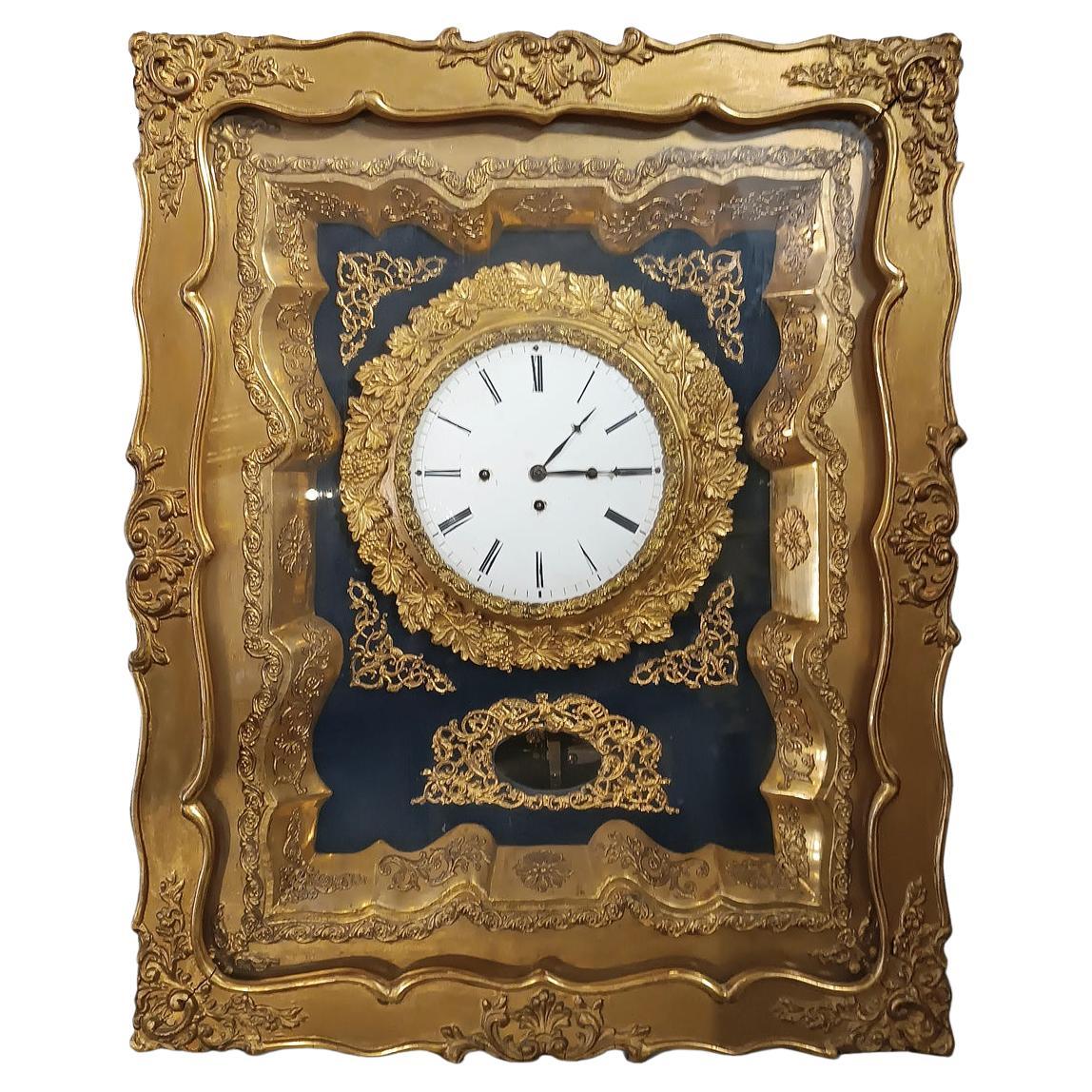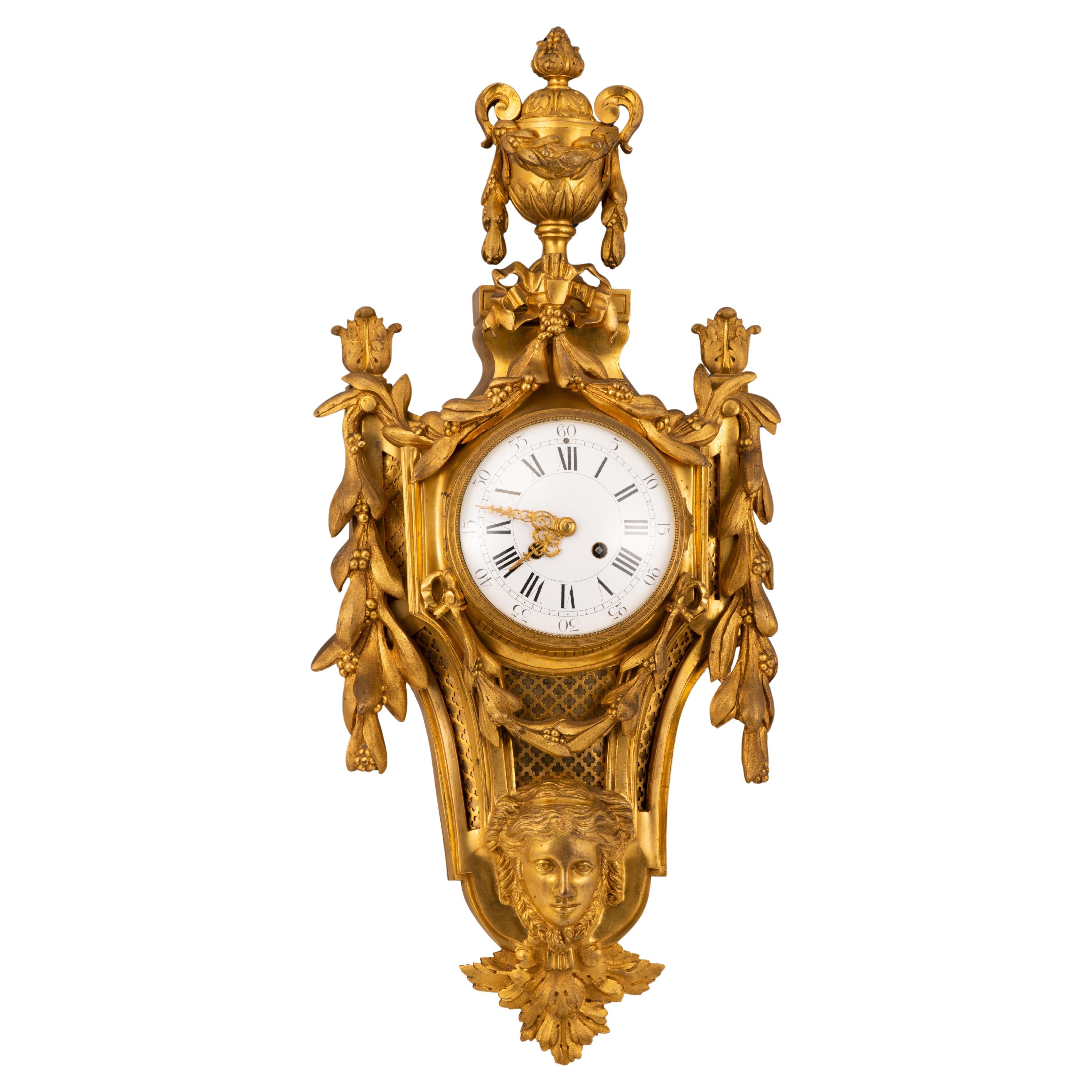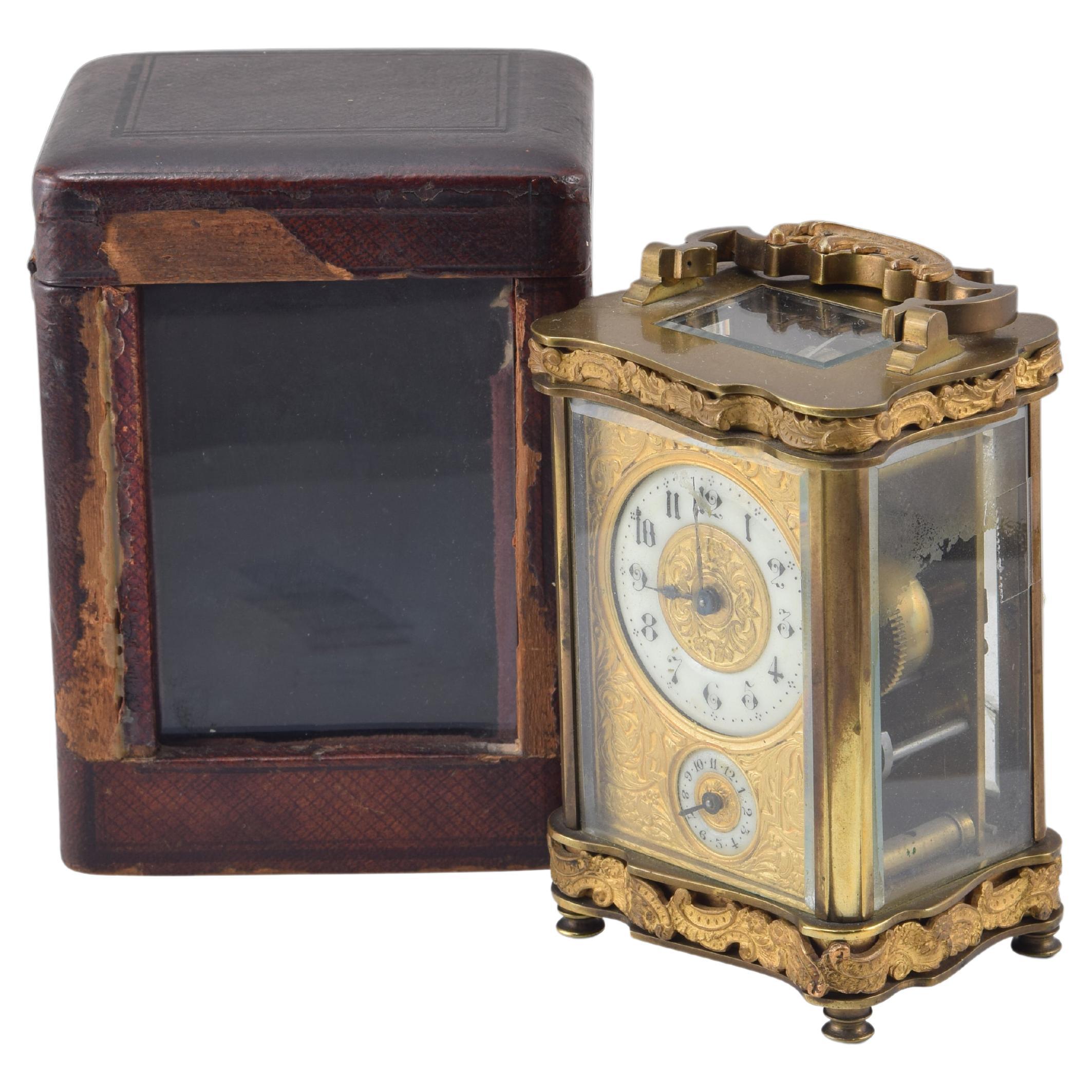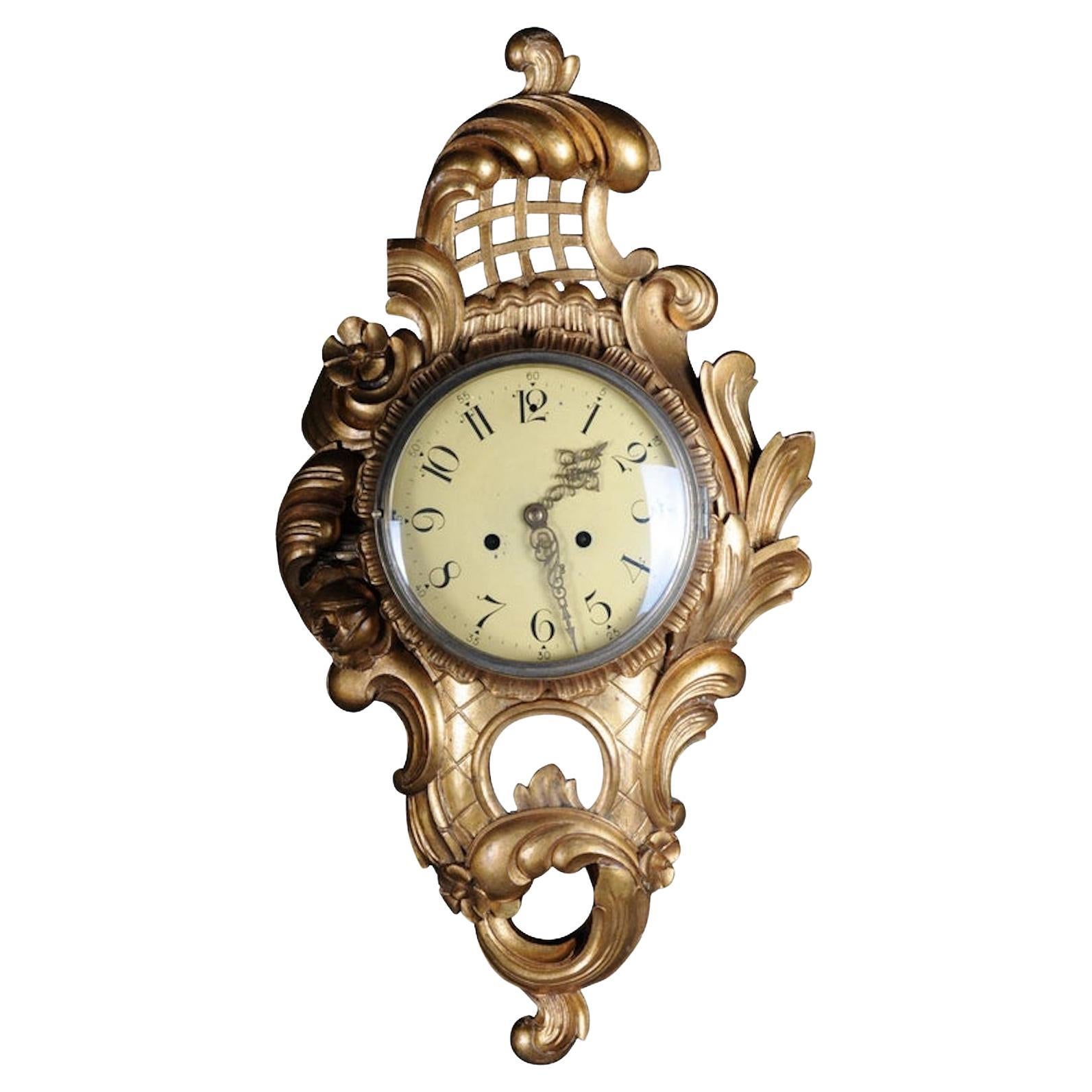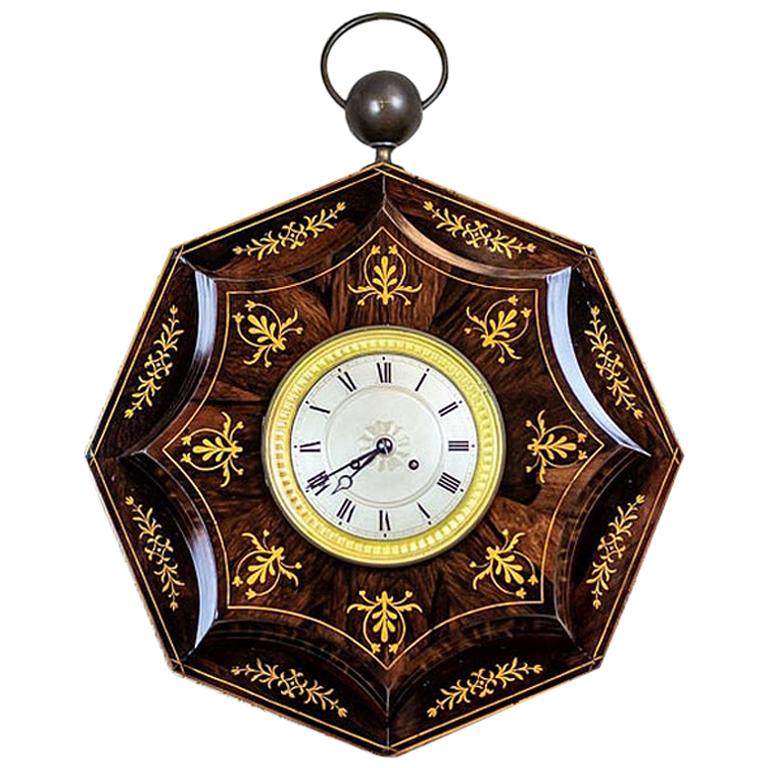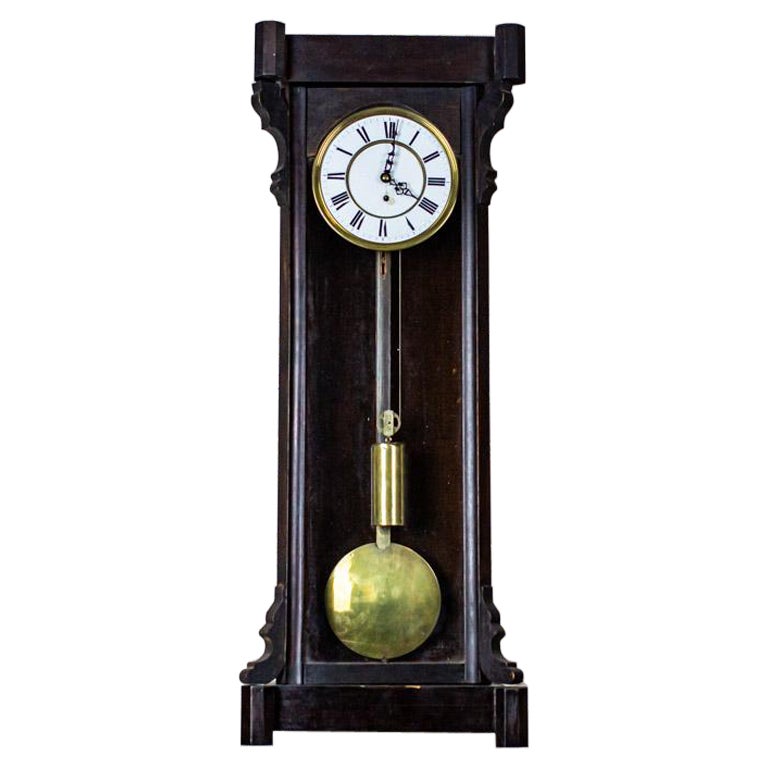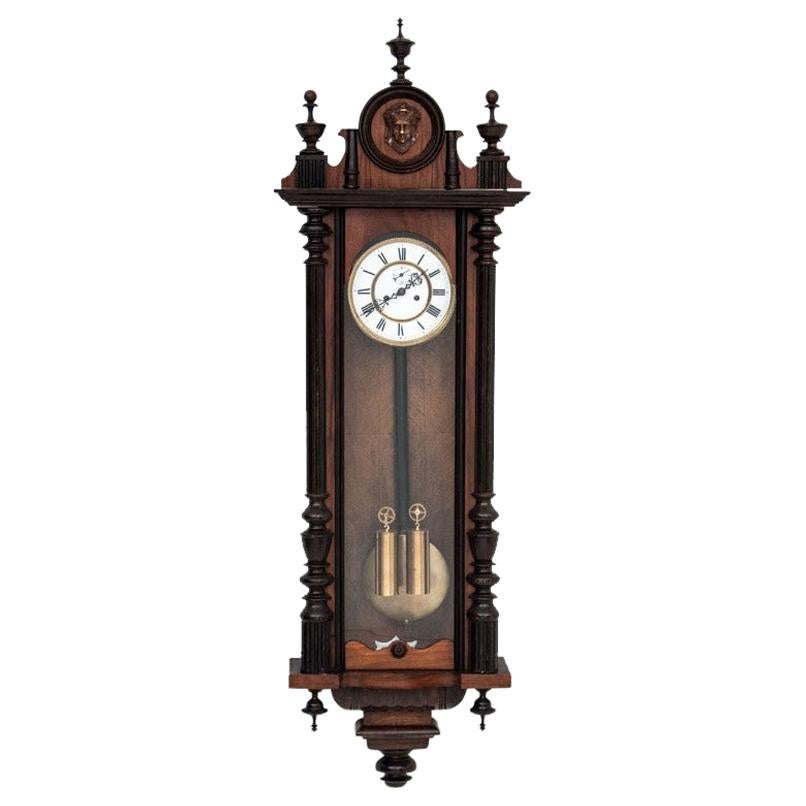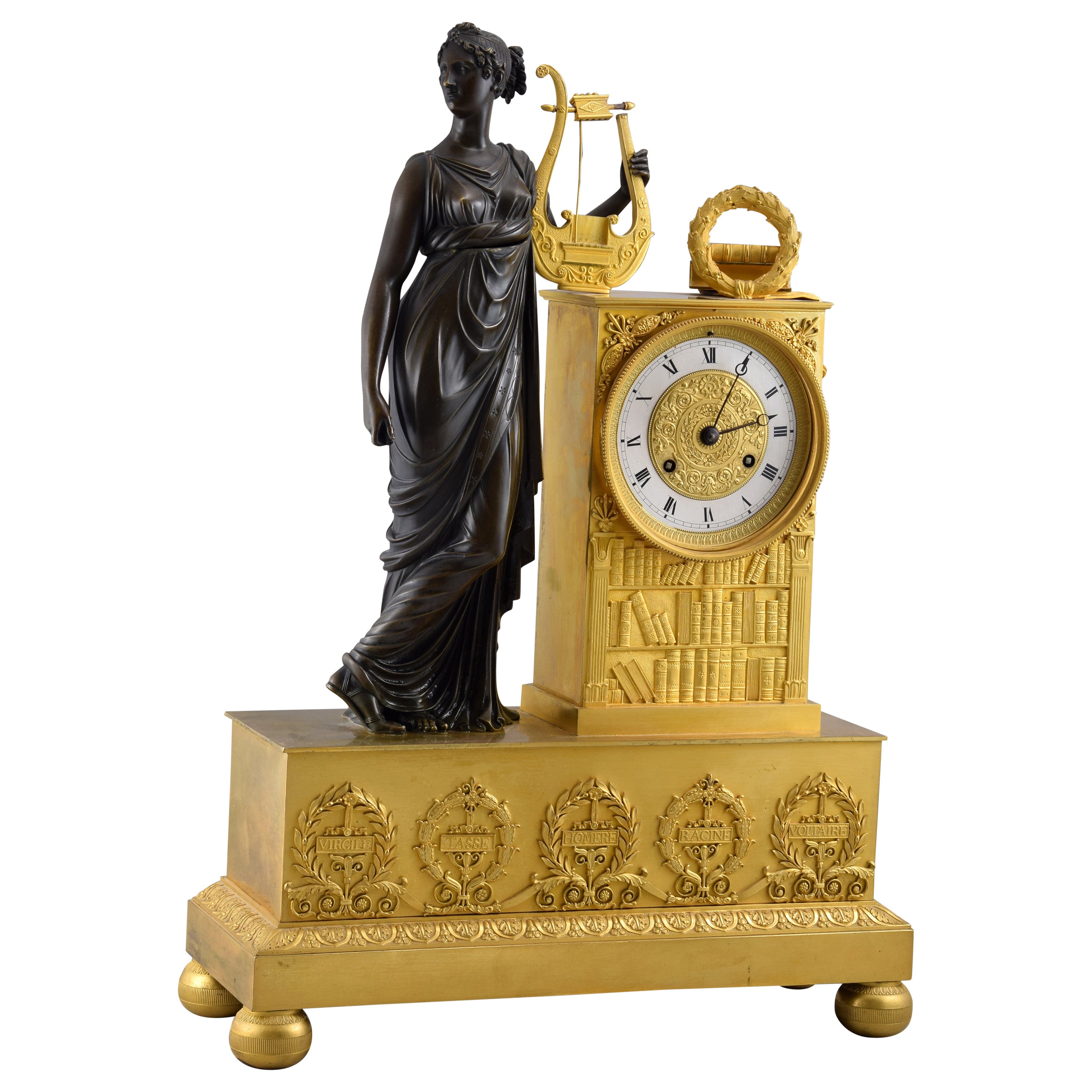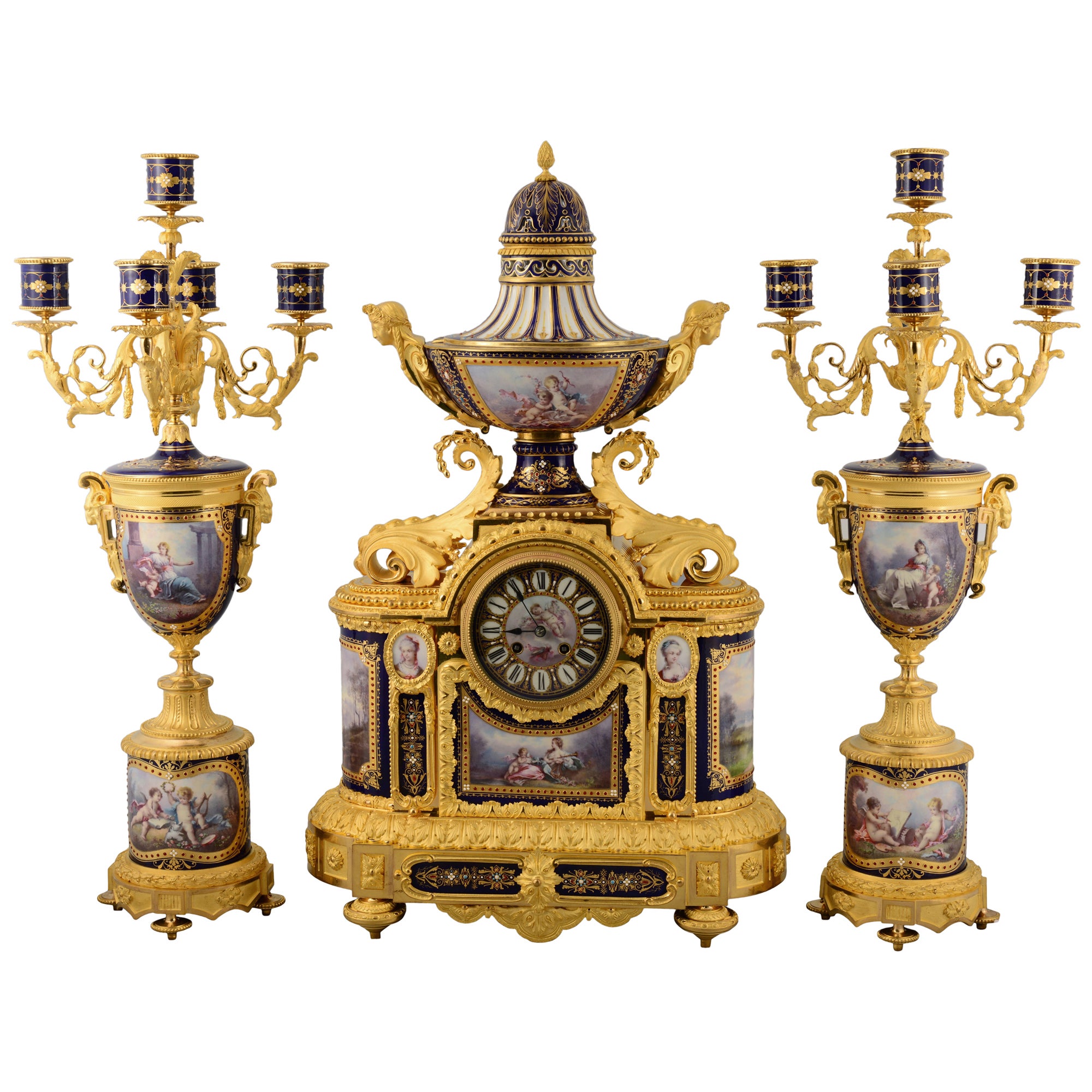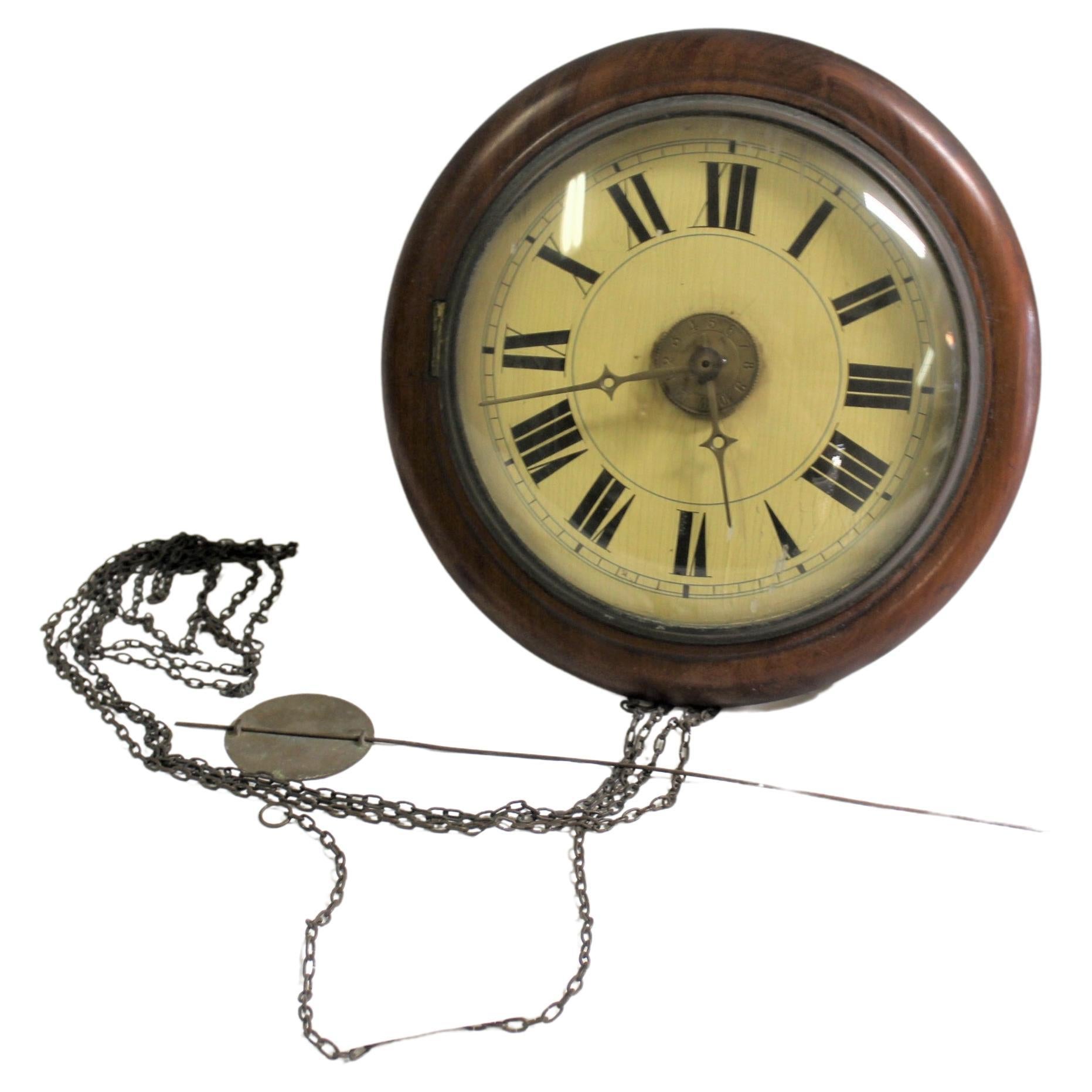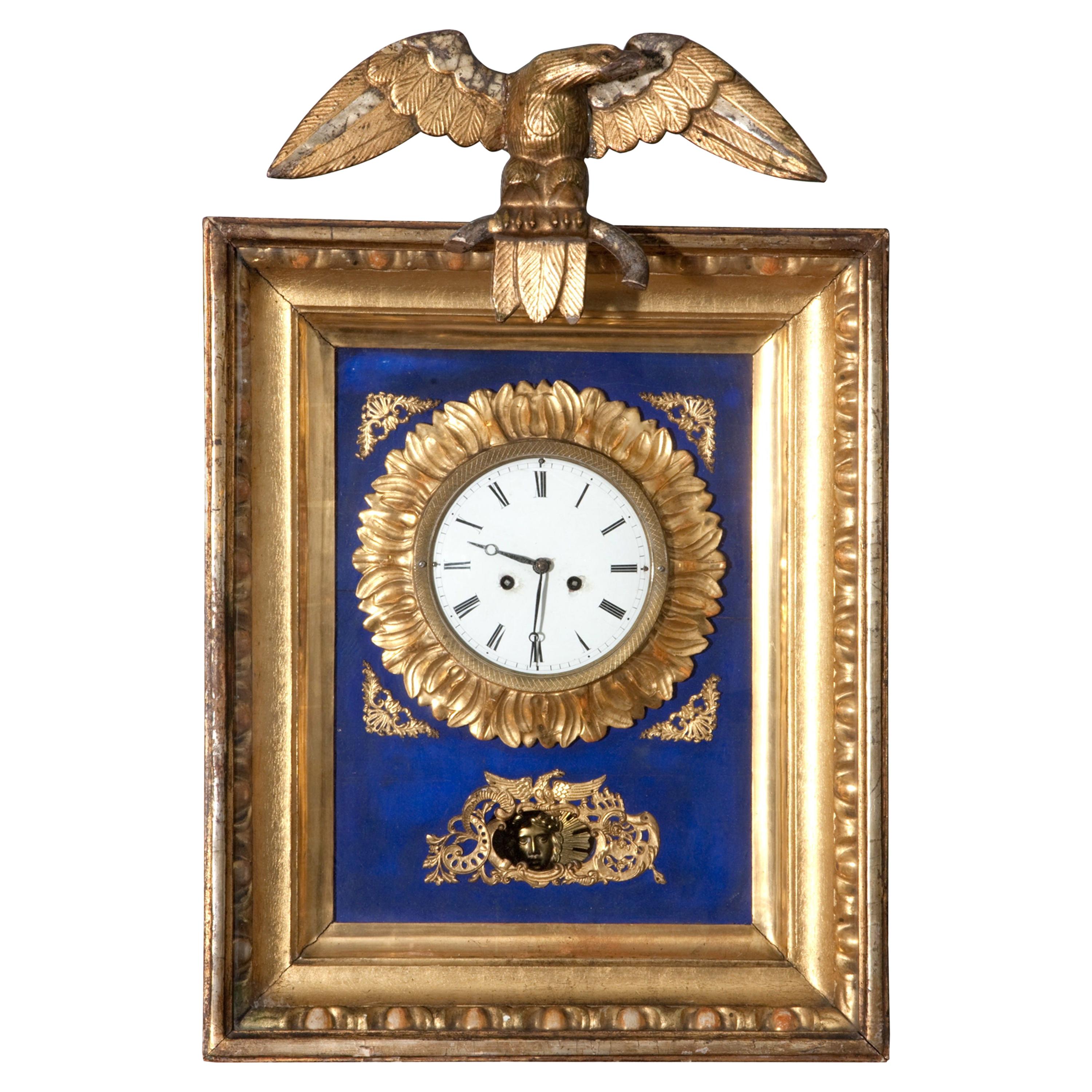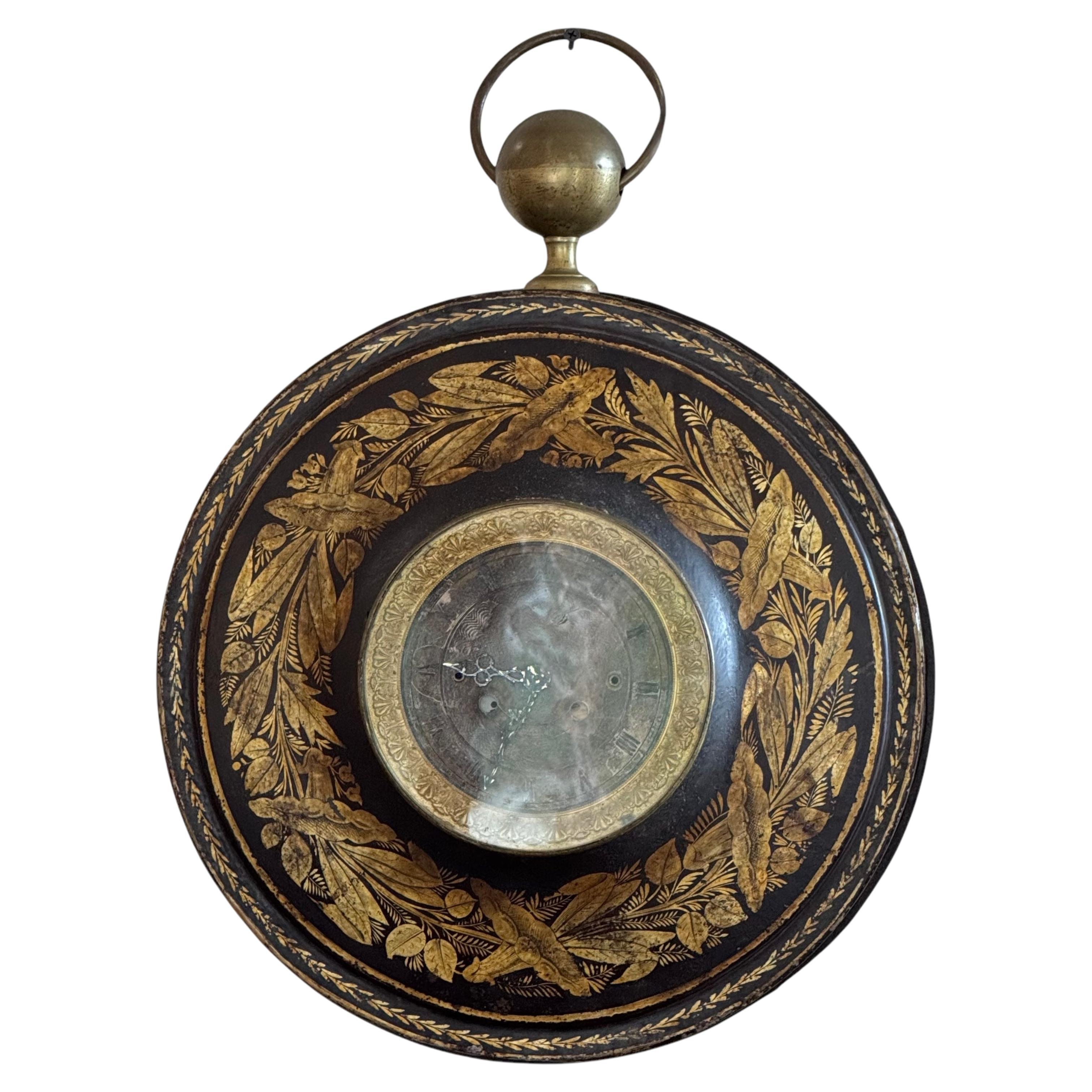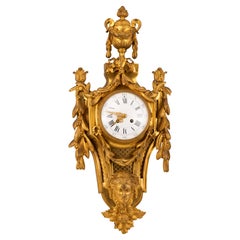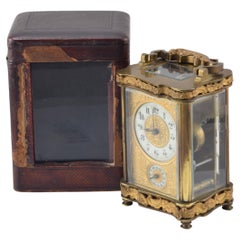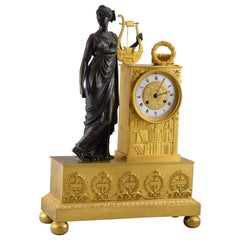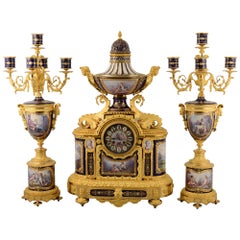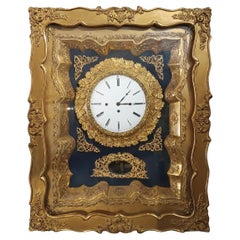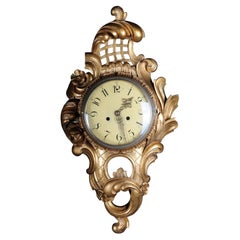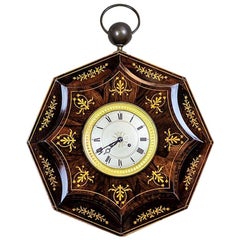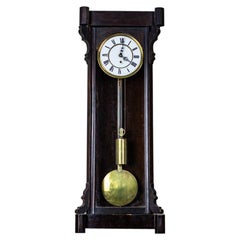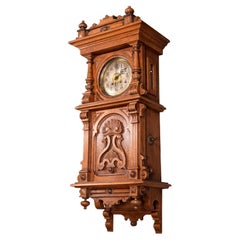
Wall Clock with Working Music Box, 19th Century
View Similar Items
Video Loading
Want more images or videos?
Request additional images or videos from the seller
1 of 7
Wall Clock with Working Music Box, 19th Century
About the Item
- Dimensions:Height: 37.41 in (95 cm)Width: 14.57 in (37 cm)Depth: 8.67 in (22 cm)
- Style:Neoclassical Revival (Of the Period)
- Materials and Techniques:
- Place of Origin:
- Period:
- Date of Manufacture:19th Century
- Condition:Wear consistent with age and use. Minor losses. Minor fading.
- Seller Location:Madrid, ES
- Reference Number:Seller: z31521stDibs: LU2951328719702
About the Seller
4.9
Vetted Professional Seller
Every seller passes strict standards for authenticity and reliability
Established in 1985
1stDibs seller since 2017
341 sales on 1stDibs
Typical response time: 6 hours
Authenticity Guarantee
In the unlikely event there’s an issue with an item’s authenticity, contact us within 1 year for a full refund. DetailsMoney-Back Guarantee
If your item is not as described, is damaged in transit, or does not arrive, contact us within 7 days for a full refund. Details24-Hour Cancellation
You have a 24-hour grace period in which to reconsider your purchase, with no questions asked.Vetted Professional Sellers
Our world-class sellers must adhere to strict standards for service and quality, maintaining the integrity of our listings.Price-Match Guarantee
If you find that a seller listed the same item for a lower price elsewhere, we’ll match it.Trusted Global Delivery
Our best-in-class carrier network provides specialized shipping options worldwide, including custom delivery.More From This Seller
View AllWall clock. Gilt bronze. France, 19th century.
Located in Madrid, ES
Wall clock. Gilt bronze. France, 19th century.
Gilt bronze wall clock of the type known as a "cartel" due to its shape, featuring Parisian movement and a white dial with Roman numer...
Category
Antique 19th Century French Neoclassical Revival Wall Clocks
Materials
Bronze, Other
Carriage clock with case. 19th century
Located in Madrid, ES
Travel clock with case. Metal, glass, leather, etc. XIX century.
Case with lid at the top and front with a transparent glass sheet, upholstered on the inside, containing a travel cl...
Category
Antique 19th Century European Neoclassical Revival Carriage Clocks and T...
Materials
Metal, Other
Table clock with Muse and writers. Bronze, Paris movement. France, 19th century.
Located in Madrid, ES
Table clock with Muse and writers. Blued and gilded bronze, Paris movement. France, 19th century.
Perfectly working mechanism.
Table clock in blued and gilt bronze with Paris mac...
Category
Antique 19th Century French Neoclassical Revival Mantel Clocks
Materials
Bronze, Other
Garniture, clock and candelabra. Bronze, porcelain. France, 19th century.
Located in Madrid, ES
Garnish with clock and candelabra in porcelain and gilt bronze. France, 19th century.
Mechanism in perfect working order.
Fireplace garnish composed of a clock and two five-light candelabras, all three pieces made by combining gilt bronze, with relief elements and round bulges and cold-chiseled details, and porcelain decorated with low-temperature enamels, including gold enamel. The porcelain pieces follow models from the Sèvres National Manufacture of the 18th century, with large pictorial cartouches on a cobalt blue background adorned with golden plant motifs. The set follows a historicist design that combines baroque and neoclassical elements with enamelled scenes of Rococo inspiration, representing landscapes and scenes with mythological themes alluding to the arts and the goddess Venus. The clockwork is stamped “Chles. MT”, with serial number 17420. The main glazed porcelain plates are signed DP Boncher. The clock follows an architectural structure, with an oval base with a prominent front in plan, raised on four molded feet in the shape of a top, on which a large ornamental vase is placed. This plinth has a distinct pinto and, above it, a main body as a façade, with a circular pediment that houses the clock face. This includes black enamelled Roman numerals on white medallions with a gold border, arranged around the central representation of a putti reclining among clouds, holding a floral garland and accompanied by musical instruments. Among the medallions that house the numbers, a small jeweled decoration that evokes pearls and embedded rubies, which is echoed in the secondary areas of the body of the piece and also the vase, always combined with delicate golden filigrees.
On both sides of the sphere are two female portraits of ladies from the 18th century, in oval frames. Below, a classically inspired scene with a muse holding musical instruments, probably Euterpe or Erató, accompanied by a putti reading a sheet of music. On the sides of the clock body, two large curved rectangular plates house highly pictorial enameled landscapes, worked with the same miniaturist precision as the rest of the enameled cartouches. These are landscapes of romantic heritage, again inspired by the 18th century, with ideal settings for a twilight atmosphere, featuring classical ruins. The vase that tops the body of the clock has a hemispherical tank, shoulders ending in an edge, an openwork truncated conical neck, which opens smoothly towards the shoulders, and a domed lid, also openwork. The handles are figurative, in bronze, with two female sisters crowned with flowers, of clear Greco-Latin inspiration, worked in a round shape. In the tank, the vase houses two enameled porcelain cartouches, the front one with two putti and a dove - a symbolic allusion to Venus - and the back one with musical instruments. The design of the clock is completed by two thick bronze S-shaped plant braces, under the vase, and counter moldings and plant motifs cast in relief and cold chiseled, combining matte and polished finishes. The candelabras follow a similar design, with large vases of neoclassical design on pedestals, in this case cylindrical, raised on four low feet of turned design. The bases house porcelain cartouches with scenes of putti related to the arts; In one of them we see two putti practicing painting, and in the other two others in a scene related to classical lyric poetry, with one putto writing while the other, holding a lyre, raises a laurel wreath above his head. The cartouches that occupy the front of the candelabra vases...
Category
Antique 19th Century French Neoclassical Revival Mantel Clocks
Materials
Metal, Bronze, Other
Table clock, Cupid with rooster. Bronze, marble. Posib France, circa late 19th c
Located in Madrid, ES
Table clock. Gilt and blued bronze, marble base. Possibly France, late 19th century.
Working.
Table clock with Paris machinery in working order that has a rectangular light marble base with the front slightly forward to allow space for the clock case. It has a white dial, Louis XVI type hands and Roman numerals for the hours and Arabic numerals five by five for the minutes. This part is sheltered in a golden marble pedestal, which has a base of Greek fretwork...
Category
Antique Late 19th Century European Neoclassical Revival Mantel Clocks
Materials
Marble, Bronze, Other
Clock and candelabra garniture. Paris, France, second half 19th century.
By Raingo Frères
Located in Madrid, ES
Clock and candelabra trim. Blued and gilded bronze, marble. Raingo Frères, Aaria, Clodion. Paris, France, second half of the 19th century.
Working.
The two candelabras follow a model highly appreciated in the 19th century of a bronze figure of a bacchante (a common figure in the procession of the classical god...
Category
Antique 19th Century French Neoclassical Revival Mantel Clocks
Materials
Marble, Bronze, Other
You May Also Like
EARLY 19th CENTURY GOLDEN WALL CLOCK WITH MUSIC BOX
Located in Firenze, FI
Splendid wall clock set in an elegant opening wooden case, with carved frame and golden tablet. The internal finishes of the clock are also in golden tablet and brass. The decoration...
Category
Antique Early 19th Century Austrian Empire Wall Clocks
Materials
Brass
French Rococo Wall Clock 19th Century, Gold
Located in Berlin, DE
Solid wood hand-carved with rich rococo elements. Roman dial. Glazed.
Clockwork should be checked for accuracy.
Category
Antique 19th Century French Rococo Revival Wall Clocks
Materials
Wood
$899 Sale Price
20% Off
19th Century Biedermeier Wall Clock
Located in Opole, PL
We present you this highly unique clock from the 1st half of the 19th century.
The mechanism is spring, with winding. The clock strikes full hours and halves.
Furthermore, the case...
Category
Antique 19th Century European Biedermeier Wall Clocks
Materials
Wood, Rosewood
$2,039 Sale Price
20% Off
19th-Century Pendulum Wall Clock
Located in Opole, PL
We present you this chain pendulum clock with a gravity winding mechanism with a single weight.
The case bears normal traces of long years of use.
It is intended to be renovated.
...
Category
Antique Late 19th Century Wall Clocks
Materials
Brass
$463 Sale Price
20% Off
Antique Wall Clock, Late 19th Century
Located in Chorzów, PL
The clock is functional, after the clockmaster review
Year: The end of the 19th century
Origin: Western Europe
Dimensions: Height 133 cm / width 42 cm / depth 17 cm.
Category
Antique Late 19th Century Belgian Other Wall Clocks
Materials
Oak
$880 Sale Price
20% Off
19th Century Antique Wall Clock, Wood German
Located in Los Angeles, CA
A rare find Antique French or maybe German wall clock. All wood frame with hand made brass gears. The dial is painted and shows the old paint cracks. I beli...
Category
Early 20th Century French French Provincial Wall Clocks
Materials
Wood
Recently Viewed
View AllMore Ways To Browse
Gothic Silver Clock
Antique Novelty Clocks
Antique Wooden Works Clock
Disc Music Box
Gothic Wood Clocks
Music Box With Metal Disc
Antique Music Box With Discs
Outdoor Wall Clock
Antique Art Deco Wall Clock
Retro Yellow Wall Clock
Vintage Advertising Clocks
1970s Seiko
Antique Hand Washer
Antique Round Wall Clock
Clock Radio Vintage
Mid Century Ceramic Wall Clock
Mid Century Sunburst Wall Clock
Swedish Gilt Clock
